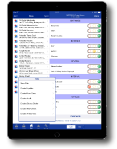The UK’s Plain Old Telephone Service (POTS) – also known as the Public Switched Telephone Network (PSTN) – is being phased out. By 2025, you’ll no longer be able to use your landline to make or take calls.
BT expects to have retired the PSTN by December 2025, replacing it instead with what it describes as digital voice technologies, using the internet for calling. The technology is called VOIP, which stands for Voice Over Internet Protocol and is a service already provided by hundreds of potential partners. While mobile phones are at the heart of many businesses, you’ll still want to have a fixed phone number for your cleaning company that is available and always answered.
Here are 3 things every business should do to prepare for the transfer of telephone services to the digital world.
- Identify the functionality that you want from a VOIP system
VOIP platforms use the internet to communicate, so you’ll need a speedy and stable connection. A robust connection will ensure that you can speak with low latency, that annoying delay you often get on international calls or dropouts. Using a wired connection will give the best signal strength and the clearest calls.
We’ll assume you’ve got the network sorted; now it’s time to sketch out what you need. First, plan out how many phone extensions you’ll need and the essential functionality you require. VOIP systems can be integrated within your current systems (automatically displaying customer records when they call, for example), so spend time understanding what’s out there and how it could benefit your business.
Use existing contracts to estimate the average time spent on the phone each month (something that will come in handy in the next stage). Consider the essential requirements to do the job and aim to keep costs low.
Each provider will have its portal or control panel – online software that enables you to answer calls, transfer them and manage your service contract. You’ll need to run this on your systems, so ensure your technology is up to the job.
2. Review at least three service providers and compare the functionality & costs
When investing in a new VOIP system, always get at least three quotes and compare them. VOIP providers work on a software-as-a-service model, where you pay a monthly subscription for the service. You’ll also pay for each call and need to pay a monthly fee for each unique number. Providers will try many ways to rope you into a contract. It can sometimes be challenging to unpick precisely what you’re paying for. To help you compare each offer, get these 5 pieces of information from every provider:
- Monthly subscription costs per-person
- Call costs (per minute)
- Telephone number cost (per number)
- Call answering costs
- Billing schedule
If you manage to get this information from each provider, you can use your estimates (gathered at stage one) to work out the monthly and annual costs of each contract. But it’s not just about the cost, find out about the service you’ll receive too. Be sure to check user reviews online and ask for references. Ask whether the provider offers any training and support.
3. Consider the impact of business continuity
A phone line is critical for many businesses, so what happens if things go wrong? Companies may promise the world, but you’ll see what they’re truly made of in a crisis. Before selecting a supplier, ask them about their business continuity plans and support for disaster recovery. While system outages are rare, their impact can be huge. One of the benefits of VOIP is that you can redirect calls from any number you own to a mobile. If you’re experiencing a local network outage, you can immediately re-route calls to ensure your business stays in communication with clients and customers. Behind the scenes, you’ll need to develop a robust disaster recovery plan to ensure that you’ll always have someone on hand to pick up the phone in the event of a software failure or network outage.
Don’t delay. A working phone line is essential for every cleaning business, so don’t delay an upgrade. As we’ve seen, switching to VOIP is an unavoidable change that will make your customer service better, faster and more responsive.
By following these simple steps, you’ll be able to secure a VOIP contract that provides the connectivity and control you need.





